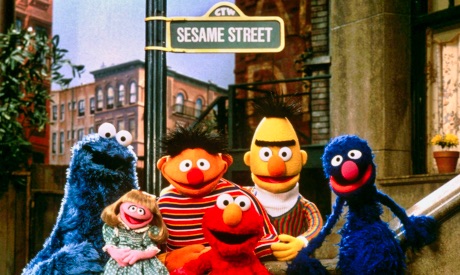Early one Sunday morning in 1965, the psychologist Lloyd Morrisett found his three-year-old daughter sitting in front of the family television staring at the test pattern.
He wondered if he could harness this captivating power of the screen for good and asked as much of the guests at a dinner party he attended shortly thereafter.
The party was hosted by Joan Ganz Cooney, who replied that she would like to find out.
In November 1969 the pair debuted their answer.
After countless hours of research, not to mention $8 million worth of fundraising, the newly formed Children’s Television Workshop, co-founded by Cooney and Morrisett, saw the first episode of “Sesame Street” air on public television.
Fifty years later, it is safe to say the answer to Morrisett’s question is a resounding yes.
“Sesame Street” revolutionized children’s television programming through its focus on providing early education in colorful bite-size lessons for young children from low-income families.
Yet the appeal of the show has grown beyond any particular age or socioeconomic group.
Adults and children alike in more than 150 countries have delighted in the whimsical combination of the everyday and the surreal, the timeless humor and heart of the characters on “Sesame Street.”
An estimated 86 million American children have watched the show, which has earned 189 Emmy Awards and 11 Grammy Awards.
Over the years, “Sesame Street” has met with more than a few challenges and changes, not least of which was the shift from an hour-long program aired on PBS to half-hour episodes aired on HBO. (Yes, a “Sesame Street” segment paroding “Game of Thrones”—called “Game of Chairs”—followed.)
The 2016 move stirred some controversy—HBO viewers are less likely to be the low-income families for whom the show was originally meant.
The new content is made available free on PBS on a nine-month delay.
With 50th-anniversary celebrations of the show underway, the beloved Muppets of “Sesame Street” have recently been featured in prominent off-screen gigs: Cookie Monster sang “Take Me Out to the Ballgame” at the seventh inning stretch of a Cubs game at Wrigley Field (“me don’t care if me ever get back”).
A gaggle of Muppets crowded into the NPR studios in Washington for a Tiny Desk concert, and the Sesame gang has just finished up a 10-city road trip bringing family-friendly festivals throughout the country.
What is it about these Muppets and the lessons they share that, decades after they first gathered on that famous “Sesame Street” stoop, the show remains so beloved that thousands of adults will not only accept but take joy in the fact that a ravenous, blue, googly-eyed monster is leading them in song in a Major League ballpark?
The answer can be found not just in the characters, but embedded in the philosophy and history of the show itself, much of which is wonderfully documented in Street Gang: The Complete History of Sesame Street, by Michael Davis.
As it turns out, the show can teach more than numbers and letters.
The history of “Sesame Street” offers some helpful lessons to anyone—or any church—trying to spread a message of hope in an all-too-divided and skeptical world. Continue reading
Additional readingNews category: Analysis and Comment.




